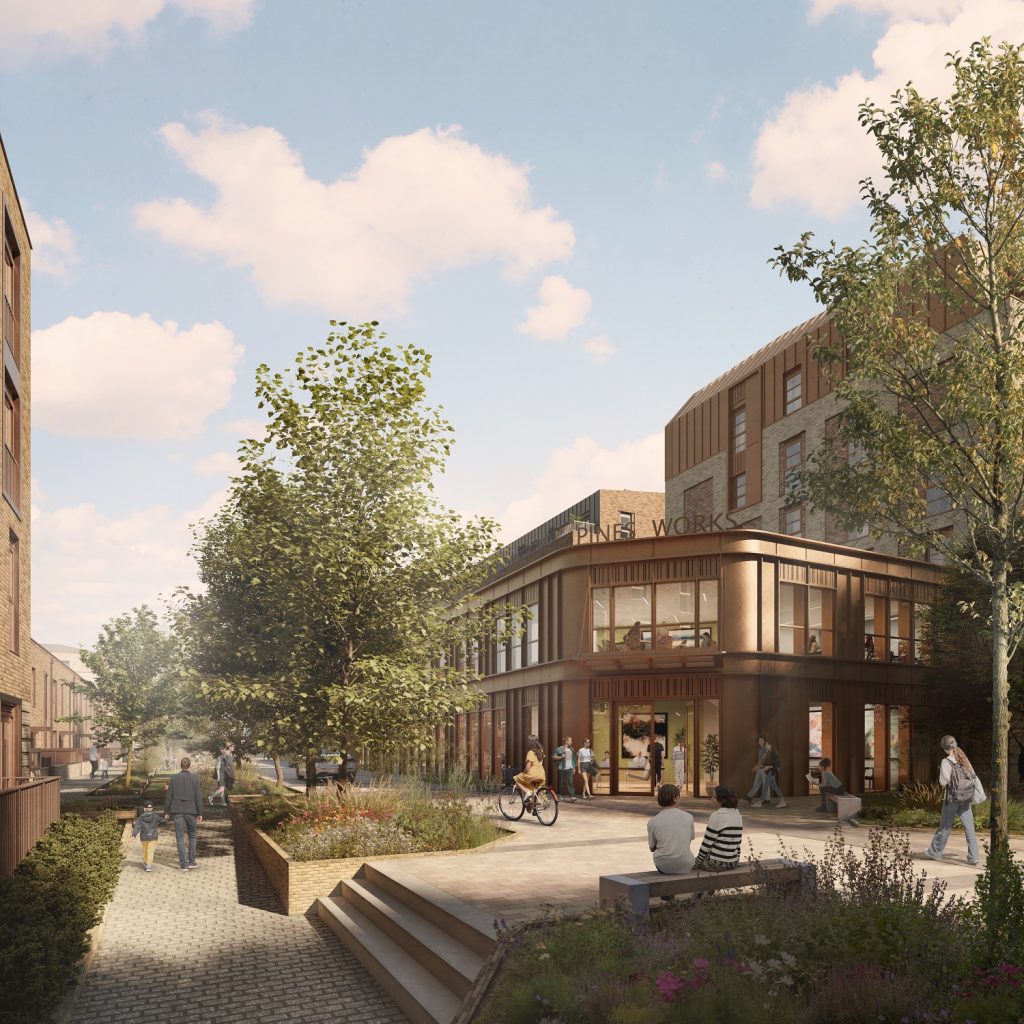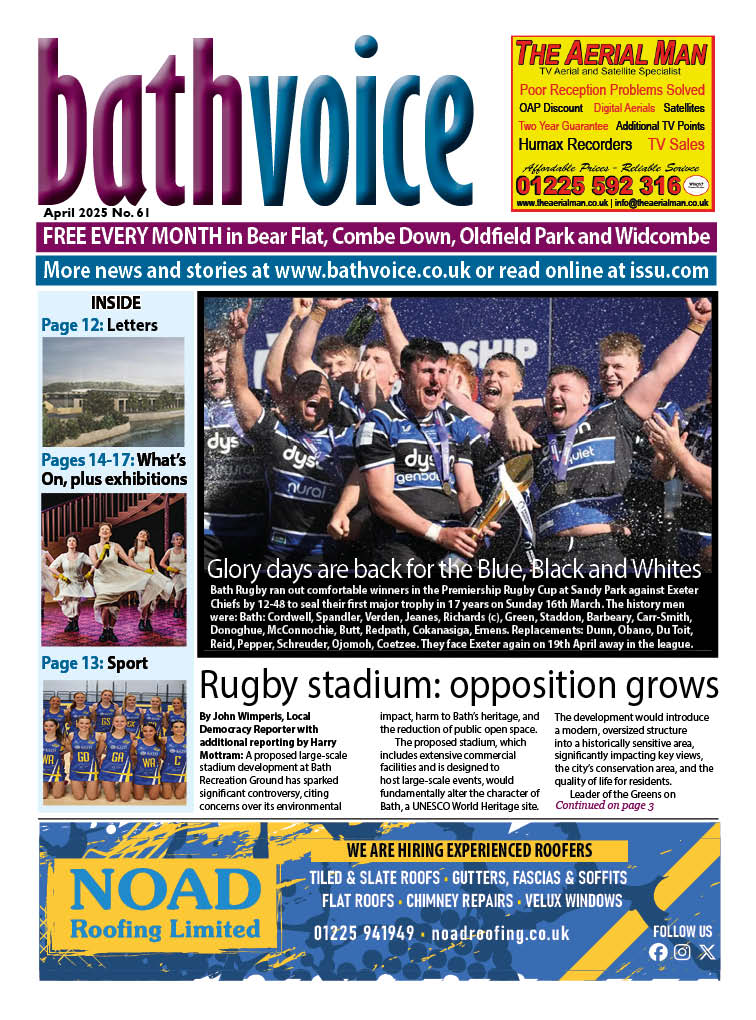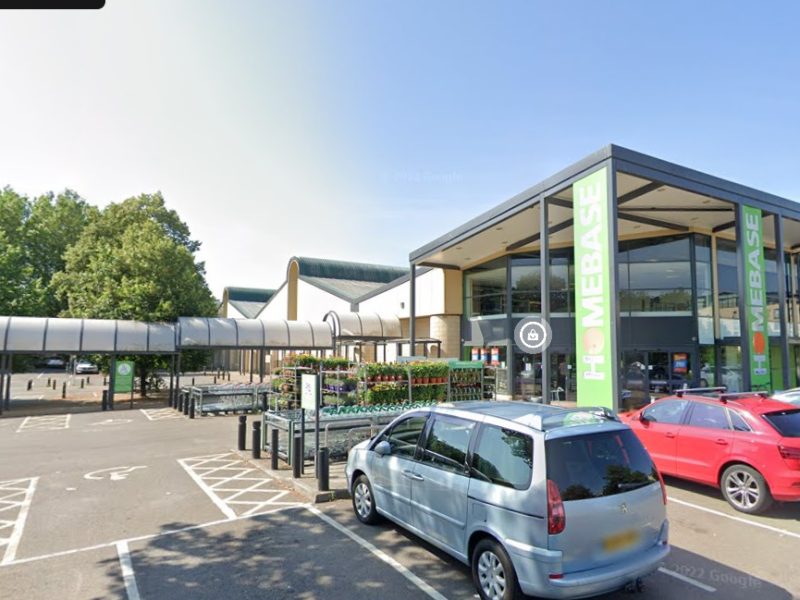By John Wimperis, Local Democracy Reporter: The empty space left by the closure of a major store in Bath will now be turned into a new city quarter with more than 450 homes.
Bath and North East Somerset Council’s planning committee voted unanimously yesterday (May 7) to approve developer HUB’s plan to build on the 4.45 acre site of the old Homebase, just over the river from Green Park station. The plans also include new streets, shops, and public spaces in what has been described as an “exciting new quarter of the city.”
A total of 454 homes will be built across four blocks at the “Pines Way” development. 275 of the homes would be “built to rent” homes and the remaining 179 would be “shared living.” Also known as co-living, shared living is a relatively new concept where residents have a self-contained living unit but have access to more shared amenities.

But none of the homes will be affordable housing, as it was judged not viable. The flats will not be marketed to students but the developers did not accept a condition to ban renting to students outright.
Debating the plans, planning committee member, Paul Crossley (Southdown, Liberal Democrat) said: “The question is: is what we are getting better than what we have got? And the answer is a resounding yes. In this world, nothing is ever perfect […] but the truth is what we have got here is a scheme that is really well thought through.”
The plans have been developed over the last eight months, with input from the public at public events. Buildings would use brick and sheet metal which planning officers say are a “honest and grounded expression of the industrial heritage of the site.”
Before the Homebase building was constructed in the 1980s, the site had largely been railway sidings as it lies just across the river from Green Park Station which until the 1960s had been the terminus of the Mangotsfield and Bath Railway Line. Today the station is a market place and the railway bridge which led to it is the entrance to the big Sainsbury’s car park.
Eleanor Jackson (Westfield, Labour) said: “I think it does have a feel actually of what was there.” She said it was an improvement on nearby Bath Western Riverside which she said looked like Stalingrad.
The homes will be spread across four blocks, ranging from four to six storeys in height, with landscaping on publicly accessible new streets between them. The plans will include more than 6,100 sqm of publicly accessible space including areas for play and improved pedestrian and cycle routes, 1,126 square metres of retail or office floorspace, 51 car parking spaces, and 704 bicycle parking spaces.
Planning committee chair Ian Halsall (Oldfield Park, Liberal Democrat) said he thought the development had a “Parisian feel.” The committee voted unanimously to grant planning permission for the major scheme. HUB hopes to start on site later this year.
Nigel Bidwell of architects JTP who designed the scheme said: “Today’s decision will lead to the delivery of high-quality, characterful buildings that frame green spaces for local people to enjoy and deliver much needed new housing in this exciting new quarter of the city.”
Former councillor Neil Butters, a retired railway manager who spent 15 years as secretary is calling for the new development to include a memorial to Bath railway workers. Railway workers in the city often faced dangerous fumes, with the city’s Combe Down Tunnel the longest single bore tunnel in the country without a ventilation shaft. Three railwaymen died in an accident in 1929 when a train ran away after the crew were overcome by fumes.
Mr Butters said he hoped for “a fitting tribute from Bath to working railwaymen.” At the committee, planning committee member Fiona Gourley (Bathavon South, Liberal Democrat) urged the developers to include a memorial in the plans.
But Ms Jackson said: “I don’t think the children and grandchildren of the workers in Stothert & Pitt and the other big units along this side of the river would be able to afford these properties. They are going to be singularly expensive. That’s the way it is in Bath.”
Usually, 30% of the homes at new large housing developments need to be affordable housing but after viability assessments warned the scheme would make a loss, the council instead accepted a £1m contribution towards delivering affordable housing.
‘Net loss’
Due to the cost of the land, a viability assessment found that — after the assumed profit — the scheme would produce a net loss of approximately £13.9m. But it said the developers thought that future rent growth could make it deliverable long term.
The viability assessment said: “the applicant is prepared to take a long-term view regarding delivery of the proposed development that over time and with future rental growth and yield compression for the residential uses (particularly co-living, which is in its infancy as an investment asset), the development is more deliverable.”
The council officers’ report told the committee that it was not their job to decide whether a development made financial sense for the developer or not. The committee could only look at the viability of the scheme in light of waiving the usual requirement for affordable housing.
Editor’s note on Neil Butters’ request for a memorial to be included for Bath Railway Workers and the 1929 Disaster in particular. On the 20th November 1929 a northbound goods train was travelling through the Combe Down Tunnel – now a cycleway and footpath – when the driver and fireman were overcome by the fumes. Passing out the train then ran down the hill out of control crashing into the goods yard near Green Park Station killing two railway workers and the driver Henry Jennings. The tunnel did not have modern smoke and fume extraction devices at the time.

Bath Voice and Local Democracy Reporters
The journalists are funded by the BBC as part of its latest Charter commitment, but are employed by regional news organisations. A total of 165 reporters are allocated to news organisations in England, Scotland, Wales and Northern Ireland including Bath Voice. These organisations range from television and radio stations to online media companies and established regional newspaper groups. Local Democracy Reporters cover top-tier local authorities, second-tier local authorities and other public service organisations.
Bath Voice Monthly Newspaper is distributed free to thousands of homes and some supermarkets – distributed from the first of the month. Harry Mottram is the News Editor
Email him at news@bathvoice.co.uk Bath website: https://bathvoice.co.uk/news/
Bath Facebook: https://tinyurl.com/bdtf2kep Also on Twitter: https://twitter.com/bath_voice And Bluesky @bathvoicenews.bsky.social And also on Instagram https://www.instagram.com/harrymottram6/
Read the newspaper online at :https://issuu.com/bathvoice
To advertise to thousands of Bathonians call Shaun on 07540 383870 or email him on sales@bathvoice.co.uk


